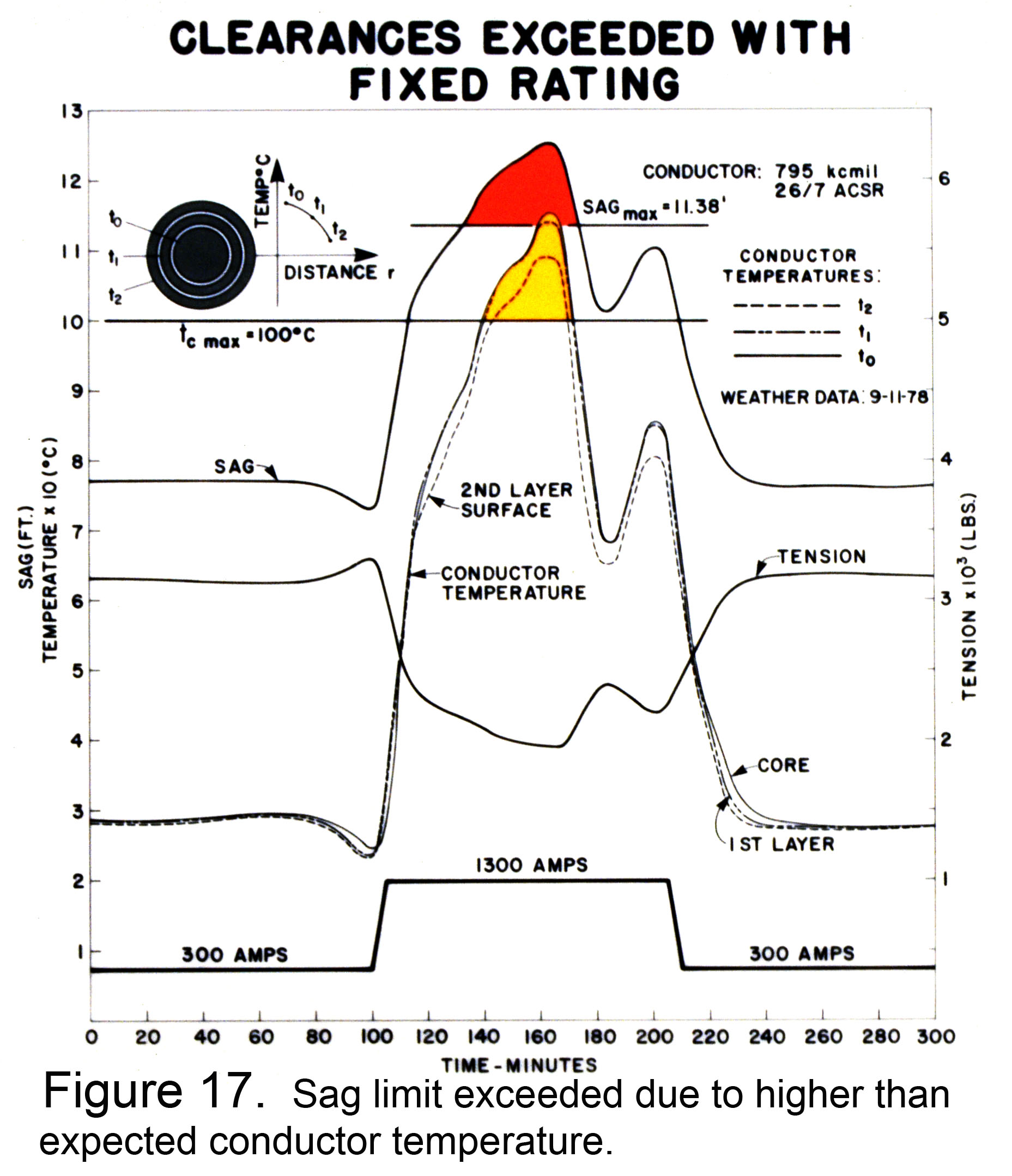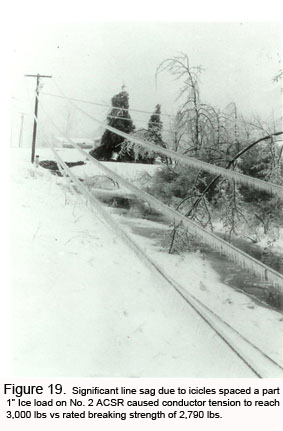
APPLICATIONS:
The list below is the possible applications for the STR Units. Click the appropriate button to get more details on the twelve applications..
7. Line Sag
Measurements:
Option A Distribution STR Units among other parameters measure the sag of the line. Option A Transmission STR Units measure line sag, tower tilt, broken conductor, insulator/line swing angle and conductor vibration. In addition to line sag, Option A Units include the measurement of the conductor temperature, ambient temperature and line current. Because of these two measurements of line sag(s) and the coincident conductor temperature, then for any future projection of conductor temperature, such as during transient or steady state conditions, the future line sag can be predicted for any selected value of line current which may be higher or lower than the existing (present) line current. This becomes a very powerful feature, since future sags can be calculated based on existing weather conditions and selected higher or lower line currents. See Figure 17.
Calculations:
The line sag is calculated based on the CPS patented very accurate measurement of the slope angle θp (see Figure 18) of the line catenary with respect to the horizontal. This method can be applied to level spans, where the point of
 attachment of the conductor at the ends of the span are at the same elevation, or where the point of attachment of the conductor at the ends of a span are at unequal elevations. Only one STR Unit is needed, both in the former and latter cases. The Powernostics® Software calculates the line sag based on the measured conductor temperature of the line and compares this value to the measured line sag based on the measured slope angle of the conductor.
attachment of the conductor at the ends of the span are at the same elevation, or where the point of attachment of the conductor at the ends of a span are at unequal elevations. Only one STR Unit is needed, both in the former and latter cases. The Powernostics® Software calculates the line sag based on the measured conductor temperature of the line and compares this value to the measured line sag based on the measured slope angle of the conductor.
If there is a deviation between the calculated and measured values of line sag, then the Powernostics® Software adjusts the value of the sag as calculated from the measured conductor temperature so the two values (i.e. sag measured from slope angle and sag calculated from measured conductor temperature) agree. This becomes a significant feature, because accurate values of sag can be predicted for any future of value of current level with existing ambient conditions.
Applications:
- Determining the sag of a transmission line or a distribution line is a very important function to insure the line does not exceed clearance limits for all operating conditions. Currently, line clearances are calculated based on assumed ambient temperature, wind velocity,
 and line current conditions, resulting in a conductor temperature. Knowing the actual line sag can prevent lines from exceeding clearance limitations and avoiding blackouts like that which occurred in the USA in August of 2003, or causing lines to sag into objects under the line.
and line current conditions, resulting in a conductor temperature. Knowing the actual line sag can prevent lines from exceeding clearance limitations and avoiding blackouts like that which occurred in the USA in August of 2003, or causing lines to sag into objects under the line. - Line sags can be forecasted for assumed line current levels which may be greater than existing steady current operating values or greater than the normal thermal rating of the line which is based on pessimistic weather conditions of ambient temperature and perpendicular wind velocity assumptions.
- Line sags can be calculated for different thicknesses of ice on the line, or as the ice is forming on the line.
- Design line sags including mechanical creep and elevated temperature creep can be calculated for different selected values of conductor temperature.
Benefits:
- Knowing the line sag and the clearance to ground or to objects under the line can prevent lines from coming into contact with underbuilt lines or exceeding safe clearance limits to objects near the line.
- The actual line sag during emergency operating conditions can avoid blackouts by knowing the resultant clearances to objects under the line or exceeding safe design clearances.
- The line sags during icing conditions can be excessive and knowing the actual sag values can prevent hazardous conditions to the public. See Figure 19.
- The Powernostics® Software can predict what the line sag will be for different levels of line loading based on current weather conditions.










